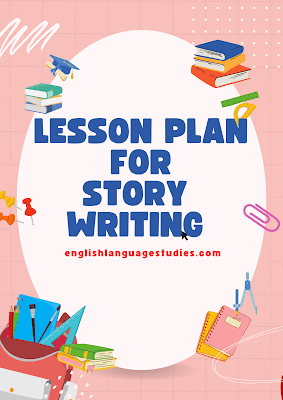Objective:
By the end of the lesson, students will be able to:
- Understand the key elements of a story.
- Develop their own creative story using a structured approach.
- Improve their writing skills through brainstorming, drafting, and editing.
Lesson Duration: 45-60 minutes
Materials Needed:
- Whiteboard and markers
- Story prompt cards
- Graphic organizers (story planning template)
- Notebooks or digital devices
Lesson Breakdown:
1. Introduction (10 minutes)
Start by asking students:
- “What makes a story interesting?”
- “Can you think of a story that you loved? What made it special?”
Activity: Show a short, engaging story (either a written piece or a brief animated video). Discuss the key elements:
- Characters (Who?)
- Setting (Where and when?)
- Plot (What happens?)
- Conflict (What is the problem?)
- Resolution (How is the problem solved?)
2. Story Planning (15 minutes)
Give students a story planning template to fill out. The template should include:
- Main Character: (Name, age, personality traits)
- Setting: (Time and place)
- Conflict: (The main problem or challenge)
- Resolution: (How the character solves the problem)
Activity: In pairs, students share their story ideas and give each other feedback.
3. Writing Time (20 minutes)
Now, students start writing their stories based on their plans. Encourage them to:
- Use descriptive language and dialogues.
- Show, don’t tell (e.g., instead of saying “She was scared,” write “Her hands trembled as she stepped forward.”)
- Maintain a clear beginning, middle, and end.
Differentiation:
- Struggling writers can use sentence starters or word banks.
- Advanced writers can focus on adding twists or more complex characters.
4. Editing and Sharing (15 minutes)
- Students revise their drafts, checking for spelling, punctuation, and clarity.
- Peer review: Swap stories with a classmate for feedback.
- Sharing: Volunteers can read their stories aloud or post them on a class board.
Assessment:
- A rubric focusing on story structure, creativity, grammar, and engagement.
- Self-assessment: Students reflect on what they did well and what they can improve.
Homework/Extension Activity:
- Finish the story at home and illustrate a scene.
- Rewrite the story from another character’s perspective.
Conclusion:
Story writing is an exciting way to enhance creativity and language skills. This structured lesson helps students craft engaging narratives while improving their grammar and storytelling abilities. Try this in your classroom and let the creativity flow!
